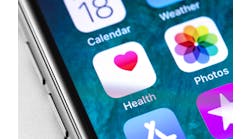Although recent policy efforts have aimed to enhance patients’ abilities to access to their electronic health information—with a key component that allows them to download health record data to their smartphones—a new study shows that efforts from healthcare systems and vendors in this area have so far been sluggish.
For the study, Julia Adler-Milstein, Ph.D., of the University of California, San Francisco (UCSF) School of Medicine, and Christopher Longhurst, M.D., CIO and associate chief medical officer at UC San Diego Health, analyzed 12 U.S. health systems with at least nine months of experience—beginning in April 2018—allowing patients to download their electronic health information to a smartphone, via Fast Healthcare Interoperability Resources (FHIR)–enabled application programming interfaces (APIs).
Indeed, the federal government—via the release of two proposed rules on interoperability and patient access earlier this year, and through other means—have prioritized regulations around making it easier for patients to electronically access their health data. For instance, one requirement from CMS (the Centers for Medicare & Medicaid Services) in these proposed rules calls for public health insurers to make patient claims and other health information available to patients through third-party applications and developers. More recently, CMS also launched a pilot, “Data at the Point of Care” (DPC), that will provide clinicians with access to claims data through Medicare’s Blue Button initiative.
What’s more, private-sector efforts have ramped up as well. Apple’s Health Records solution, which launched in January 2018 and is designed to allow patients who visit participating providers to access their health data on the iPhone Health app, is already live at hundreds of hospitals and clinics.
As the researchers wrote in their study, published last week in JAMA Open Network, health systems will need to first deploy a set of technical and security standards that offer patients access to their electronic health data. “Patients must then activate the connection between their health system’s records and their smartphones. Patients who activate this connection go beyond viewing their data on a patient portal by transmitting data elements, such as current medications, test results, and immunization history, to a smartphone, where they can control them. Ultimately, the vision is for the emergence of an ecosystem in which third-party applications help patients and their clinicians and other caregivers convert data into health-improvement actions,” they wrote.
For the study, Drs. Adler-Milstein and Longhurst examined health systems that used an electronic health record (EHR) from the same vendor—Epic Systems—allowing them to create a standard data specification that the vendor executed on behalf of each participating health system. The data specification included monthly and cumulative counts of unique patient users as well as the number of unique patients who had logged into the patient portal each month, the latter of which served as a denominator for patients eligible to download their data, the researchers noted.
The data showed that just 0.7 percent of patients who logged into their healthcare provider's patient portal also use APIs to send their records to their smartphones. However, the researchers found that over time, there was a “statistically significant increasing linear trend in this measure,” of 0.14 percent per month per health system.
Adler-Milstein and Longhurst said that because of the recent industry push to more easily provide patients access to their health data, “It is anticipated that access to clinical data via Fast Healthcare Interoperability Resources APIs and use of this data by smartphone applications will allow individuals to better understand and control their health data, more easily ensure data accuracy, shop for high-value healthcare services, avoid the need to repeatedly supply data for entry into each new healthcare provider’s electronic health record, and increase their participation in clinical research.”
However, they concluded, “Because this capability is new, few applications are currently able to access and use the data. In addition, there has been little effort by healthcare systems or health information technology vendors to market this new capability to patients, and there are not clear incentives for patients to adopt it.”
They added that the generalizability of their findings may be limited because they only included early adopters using an EHR from a single vendor. But at the same time, they noted, “More than half of the U.S. population is now served by a health system using [Epic]. Nonetheless, our results offer baseline national measures against which to track efforts to create an ecosystem in which patients use their smartphones to manage and engage with their health record data,” they said.

